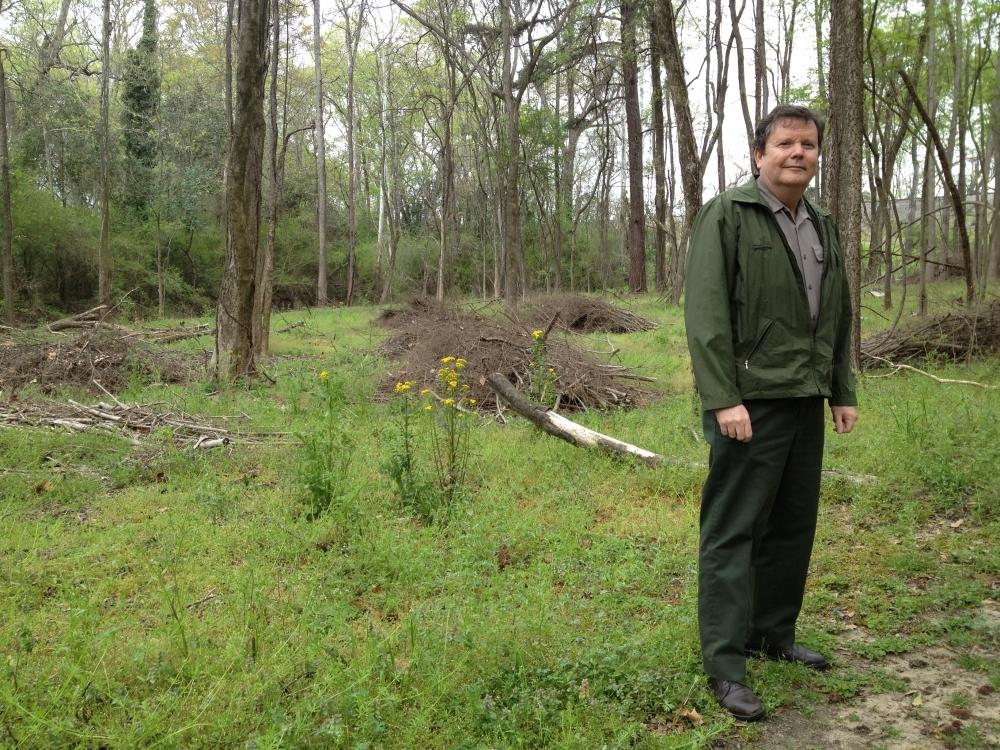
Section Branding
Header Content
Sequester Hits Ocmulgee Monument
Primary Content

The federal budget cuts known as sequestration are having their predicted impact on Middle Georgia’s biggest employer, Robins Air Force Base, but they’re also hurting the region’s biggest tourist draw — a field of ancient Native American earthworks that some say has never gotten the respect it deserves.
The Ocmulgee National Monument "has evidence of 12,000 years of human habitation [but] chronic underfunding and development…puts priceless artifacts at risk," proclaimed the National Parks Conservation Association in 2002, when the nonprofit put the monument on its "10 Most Endangered National Parks" list.
Since then, the development pressures have eased, but the underfunding problem has not, said Ocmulgee National Monument Superintendent Jim David as he described the persistently leaky roof over his pre-War visitors center.
"Unfortunately, flat roofs are not the way to go," David said. "We’ve got…a request in with the regional office to get another roof on it."
No surprise, David doesn't particularly like his chances this year. As a result of the sequester, he's had to cut his $1.2 million operating budget by 5 percent. So far, that hasn't meant reduced park hours, but it does mean David will hire fewer seasonal workers to augment his permanent staff of 10.
"To handle a 702 acre area, take care of 120,000-plus visitors, that's not a whole lot of people," David said.
And these acres present some unique challenges for David and his crew, such as mowing grass on the 55-foot tall Great Temple Mound with its near-vertical sides. Then there’s the kudzu, privet and other invasive plants that threaten to reclaim these thousand-year-old earthworks from whence they came.
David normally hires three temporary workers every summer just to whack back exotics. "We're only going to have a one person crew this year," he said. "My goal, though, was to try to have a minimal effect on the visiting public. They may see the grass a little bit longer and a few things like this, unfortunately."
Then again, what's a blade of grass compared to the mountain of federal debt that sequestration was designed—however bluntly—to address? David Cousino, a perennial candidate for local office in Macon, has for years been arguing that the Ocmulgee National Monument "should be turned over to the native Indians. Why are we paying federal tax dollars out on a daily basis when it’s not even our own property?"
Of course, not everyone sees it that way. "There are plenty of [federal] budget priorities, but I can see all kinds of money being wasted in other places," said Susan Hanberry-Martin, who sits on the board of the Ocmulgee Monument Association, a booster group. "I think these are the kinds of services that we as Americans find very, very important."
It is true that Ocmulgee National Monument was first established in a time of even greater economic hardship — and not in spite of The Depression, but because of it. The Works Progress Administration and the Civilian Conservation Corps put unemployed people to work in the 1930s excavating the Ocmulgee mounds and building all the park structures seen there today.
"It is a little ironic," Hanberry-Martin said of the historical parallel. "Would that we could have that again. It would be wonderful if we could see that sort of progress again."
In the absence of another New Deal though, Superintendent David has to start planning for next year. "Right now they’re guessing that the 2014 budget will have the 5 percent reduction we have now plus an additional 2 percent," he said. And where it will come from, he has no idea.
Tags: politics, Ocmulgee National Monument, Adam Ragusea, sequestration, national parks service
